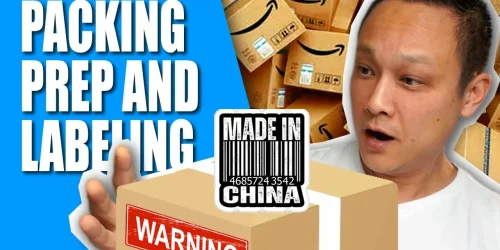How to Package & Label Your Amazon FBA Shipments | Rules & Requirements
Entering the world of Amazon FBA can be both thrilling and overwhelming, especially when it comes to understanding the intricate details of packaging and labeling your shipments. Incorrect preparation can lead not only to the rejection of your inventory but also to potential fines or, in severe cases, loss of your FBA privileges. Today, I’ll guide you through the essentials of preparing your Amazon FBA shipments, ensuring you meet all necessary guidelines to avoid any hiccups during the process.
Understanding Amazon’s Packaging and Prep Guidelines
First and foremost, familiarize yourself with Amazon’s packaging and prep guidelines. These rules ensure that your products are packaged adequately to withstand the fulfillment process without causing damage to your goods or Amazon’s facilities. Amazon’s official packaging guidelines provide a comprehensive overview, but here’s a snapshot of what you need to know:
- General Requirements: All units shipped to Amazon must be packaged securely to avoid damage during transit. Inadequately packaged goods may be refused or repackaged at your expense.
- Specific Product Requirements: Certain products have additional requirements due to their nature (e.g., fragile items, liquids, etc.).
Packaging Types and Requirements
Choosing the right type of packaging is crucial, depending on your product’s needs. Here are the three most common types of packaging used in Amazon FBA:
- Boxes: Ideal for most products, providing excellent protection. Ensure boxes are six-sided, have no openings that could accidentally open, and can withstand pressure without collapsing.
- Poly Bags: Used for less fragile items. They must be transparent, have a suffocation warning if the opening is 5 inches or larger, and be completely sealed.
- Blister Packs: Perfect for showcasing the product while offering protection. Commonly used for items like toothbrushes or small electronics.
Packaging Best Practices:
- Ensure all parts of a product are contained within a single package. Amazon will not assemble products for you.
- For sets sold as a single unit, clearly mark the packaging to indicate that items are not to be separated.
- Utilize sturdy packaging materials that meet Amazon’s requirements for durability and security.
Labeling Requirements
Proper labeling is critical to ensure your products are processed correctly at Amazon’s fulfillment centers.
Barcodes
- UPC Barcodes: Universal Product Codes (UPC) are necessary unless you opt for Amazon’s barcoding system.
- Amazon Barcodes (FNSKU): If you’re selling private label products or want to ensure no commingling with other sellers’ inventory, use Amazon’s FNSKU barcodes.
Country of Origin
- Mandatory: All products imported into the U.S. must clearly display the country of origin on the packaging and the master carton.
Other Labels
- Expiration Dates: If applicable, products must display expiration dates in a clear, compliant format.
- Suffocation Warnings: Required on poly bags with a certain opening size.
Preparing Shipping Cartons
When your individual products are properly packaged and labeled, the next step is preparing them for shipment to Amazon’s warehouses.
- Case-Packed vs. Individually Packed: Decide whether your products will be shipped in uniform boxes (case-packed) or if each box will contain assorted items (individually packed).
- Box Requirements: Comply with Amazon’s specifications for box dimensions, weight, and durability.
Shipping Labels and Carton Labels
Understanding the distinction between shipping labels (for carrier use) and carton labels (for Amazon’s internal use) is crucial:
- Shipping Labels: Provided by your carrier, necessary for transporting your goods to Amazon’s fulfillment centers.
- Carton Labels: Generated during the Amazon FBA shipment creation process, these labels must be affixed to each carton sent to Amazon.
Final Thoughts
Packaging and labeling for Amazon FBA doesn’t just end with preparing your products. Ensuring that every component—from the individual packaging to the shipping carton—is correctly handled will safeguard against potential problems and contribute to a smooth selling experience on Amazon.
For more detailed instructions, tips, and best practices, be sure to refer to the links provided in this post, and always keep abreast of any updates to Amazon’s policies. Remember, your attention to detail in packaging and labeling not only helps maintain compliance but also enhances the customer experience, reflecting positively on your brand.






